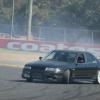BNR34 alternative reference for power steering pressure switch 49761-86L00 ?
Announcements
-
Similar Content
-
Latest Posts
-
Hi, i did try turning off the decel fuel cut, and noticed a positive change when on/off throttle in traffic, but needs tweaking as the car runs on more than i'd like. So thats still in progress. Also, i richened up the fuel map slightly and gave it more ignition advance to smooth out the idle which also helped. I've got some good advice to follow with other settings also so theres more to do. 👍🏻
-
Yeah nah, because: Something is well f**ked up on this one.
-
Pretty sure that every nissan, ever, has used the same radiator cap, and it is very common industry wide. The one on my stagea is off a mazda 3.
-
Found some cancer in the topical location for 31’s, do some emergency surgery over the next few days and see if it’s a show stopper for this silo.
-
Thank you for posting a follow up with the fix it really helps others when they are having the same problems
-





Recommended Posts
Create an account or sign in to comment
You need to be a member in order to leave a comment
Create an account
Sign up for a new account in our community. It's easy!
Register a new accountSign in
Already have an account? Sign in here.
Sign In Now